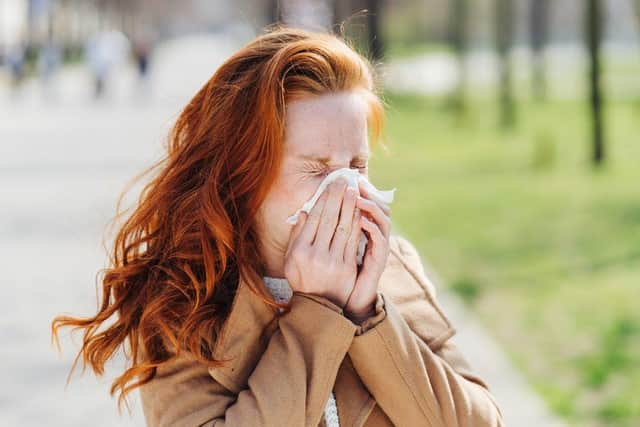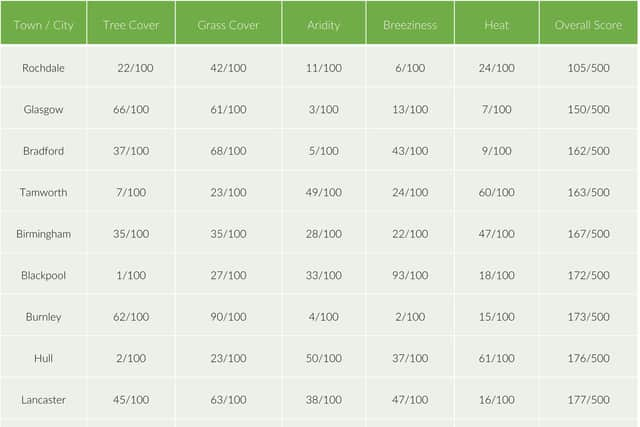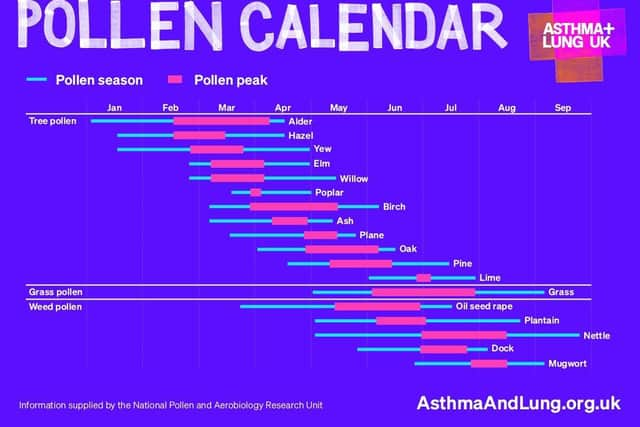Here's why Blackpool is the best place for tree pollen allergies, and how to manage hayfever symptoms
and live on Freeview channel 276
The resort was found to be the best place in the UK for tree pollen sufferers due to its extremely low tree cover.
It ranked sixth overall, with the high coastal winds are thought to increase pollen spread.
Advertisement
Hide AdAdvertisement
Hide AdTree pollen is a common hayfever trigger, and levels tend to be highest from late March to mid-May. In a survey of 100 towns in the UK, Blackpool was found to have the lowest tree cover.


Burnley ranked seventh, and Lancaster ranked ninth overall, with both having relatively high tree and grass coverage.
Biophilic design agency, Exubia, completed the survey using ONS local authority data to determine the grass cover and tree cover of each area.
The survey also measured monthly mean wind speeds in knots, maximum temperature, and average rainfall during the months most people suffer from Hay Fever (May - July).
Advertisement
Hide AdAdvertisement
Hide AdHayfever scores for the three north west locations:Blackpool: tree cover 1/100; grass cover 27/100; aridity 33/100; breeziness 93/100, heat 18/100; overall score: 172/500Burnley: tree cover 62/100; grass cover 90/100; aridity 4/100; breeziness 2/100; heat 15/100; overall score 173/500Lancaster: tree cover 45/100; grass cover 63/100; aridity 38/100; breeziness 47/100; heat 16/100; overall score 177/500


What triggers hayfever?
Tree pollen and grass pollen are the two most common hayfever triggers, and will affect sufferers at different times of the year. Tree pollen levels are highest from late March to mid-May, while grass pollen levels peak between mid-May to July.
Hay fever can also be caused by weed pollen, which is worse between the end of June and September.
What is hayfever?


Hayfever is the common name for allergic rhinitis. It’s triggered when dust mites, pollens, mould, and other microscopic particles get trapped in the tiny hairs and mucus that line the nasal passages.
Advertisement
Hide AdAdvertisement
Hide AdAn allergic reaction means the immune system treats a harmless substance as if it is dangerous, and launches an ‘attack’. The nasal passages become inflamed and more mucus is produced.
What are the symptoms of hayfever?
The most common symptoms of hayfever include sneezing, runny nose, itching, and eye irritation. It can also cause fatigue and difficulty concentrating, and may worsen other health conditions such as asthma and COPD.
How can I relieve my hayfever?
There are a number of antihistamine tablets on the market. Many are available from your pharmacist, but if symptoms persist you should see a GP.
Intranasal corticosteroid sprays (INCS) can be very effective at reducing the symptoms of hayfever and allergic rhinitis, but need to be taken regularly for them to work.
Advertisement
Hide AdAdvertisement
Hide AdDecongestant nasal sprays can provide instant relief but aren’t recommended for more than a few days.
Eyedrops can help to relieve eye discomfort.
How can I reduce exposure to pollen?
Allergy UK recommends wearing a mask, wraparound sun glasses and or a large-brimmed hat to keep pollen out of the eyes and face.
On high pollen days you should shower, wash your hair and change your clothes after being outdoors.
Avoid mowing lawns, raking leaves, and drying clothes/linen outside when pollen counts are high.
Wipe pets down with damp cloth to remove pollens.
